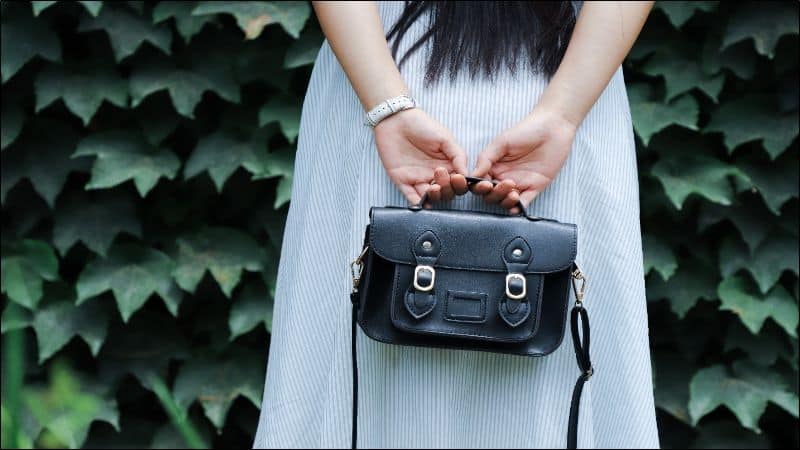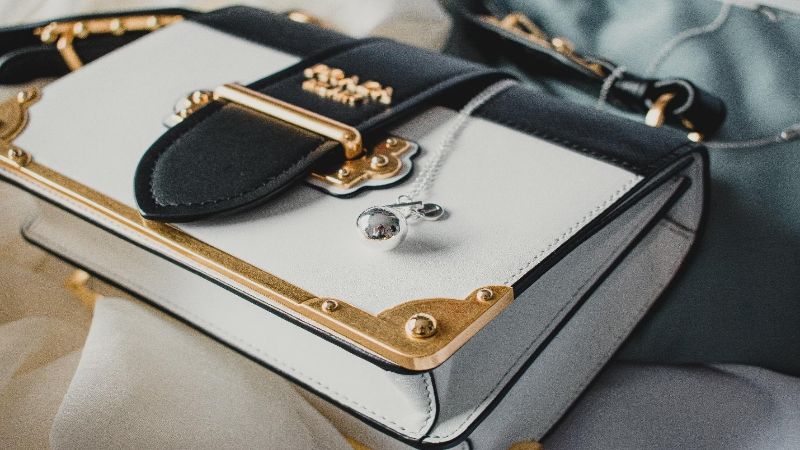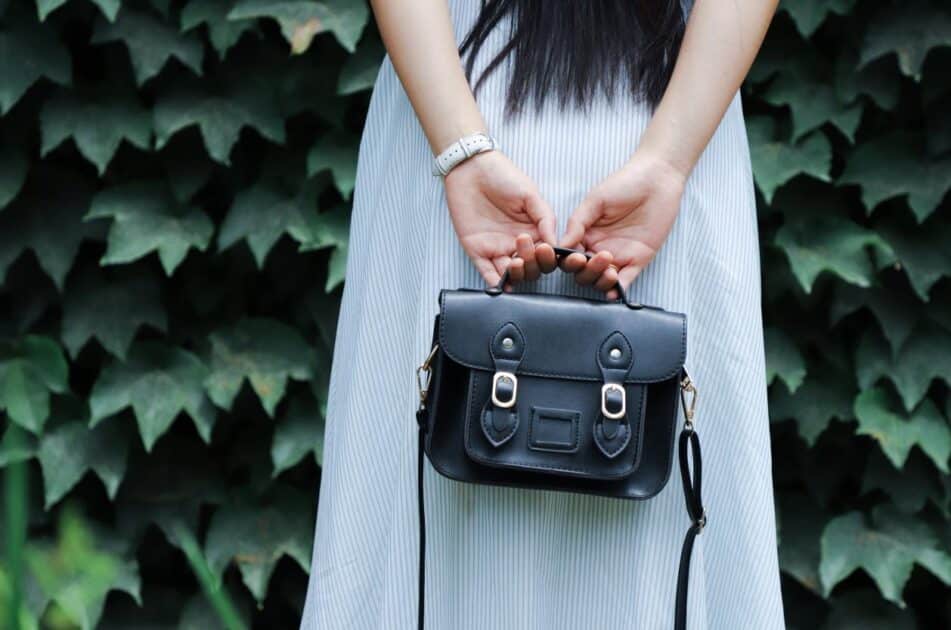Ever thought about crafting a handbag that’s uniquely yours? Whether it’s to match a special outfit or to express your personal style, making your own handbag is a rewarding DIY project. And guess what? It’s easier than you might think!
Choosing the Right Material
When you’re on the quest to create your handbag, selecting the right material is key. It’s not just about the look; the function and durability matter too. Materials vary widely in texture, strength, and ease of use, so consider your needs carefully.
The Usual Suspects
Leather is a classic choice. Durability and timelessness are its hallmarks. If you prefer a vegan option, faux leather or canvas can be great choices. Here’s a glance at their pros and cons:
- Leather:
- Faux leather:
- Canvas:
Think Outside the Box
Don’t shy away from unconventional materials like cork fabric or woven fibers. Each comes with unique textures and patterns that can set your handbag apart.
- Cork fabric:
- Woven fibers:
Function Meets Form
Ask yourself how you’ll be using the bag. Everyday wear demands tougher material while occasional use may allow for more delicate fabrics. For heavy items, choose a sturdier base like leather or a thick canvas. For light items, softer materials can suffice.
Remember, it’s the harmony of functionality and style that makes your handbag not just a container, but a statement. Select material that resonates with your lifestyle and aesthetic preference. Experiment with samples, feel the textures, and imagine the end product. Take your time – the perfect material will bring your vision to life.
Selecting a Design and Style
Once you’ve settled on the perfect material for your handbag, it’s time to dive into the fun part—choosing a design and style that reflects your unique flair. Functionality and aesthetic should be at the forefront of your decision-making. Remember, you’re crafting a bag that not only carries your essentials but also showcases your personality.
Start by considering what you’ll use the bag for: everyday use, special occasions, or flexible functionality? Perhaps you need a comfortable shoulder strap for daily commuting or a sleek clutch for evenings out.
Sketch out a few designs or browse patterns online. You’ll find plenty of templates—from totes and crossbodies to satchels and hobo bags. Think about:
- The shape of the bag
- The type of closure: zipper, button, or magnetic clasp
- Pocket placement and size for organization
- Handles or straps style and length
Size matters too—balance the bag’s dimensions with its purpose. A larger tote might be perfect for a day of shopping, while a compact messenger bag suits cycling around town.
Incorporate current fashion trends only if they resonate with you. Remember, it’s about creating a handbag that you’ll love and use. Horizontal stripes, bold patterns, or a pop of color can give your bag a contemporary edge. On the other hand, classic lines and neutral colors offer timeless elegance.
Materials from your handbag can carry over into its design—for example, a sturdy leather base elevates a simple tote, while a delicate chain strap complements a lightweight evening bag.
Craft your handbag with intention. Every stitch, every cut, every feature should have a reason—whether it’s for style, function, or a bit of both. Choose wisely, and you’re on your way to creating not just a handbag, but a statement piece that’s uniquely yours.
Gathering the Necessary Tools and Supplies
Once you’ve envisioned your perfect handbag, it’s time to assemble your toolkit. Quality tools are integral for a top-notch finished product. You wouldn’t bake a cake without the right pan; similarly, you shouldn’t start your handbag without the proper equipment.
Firstly, you’ll need a durable sewing machine that can handle the material you’ve chosen. If you’re working with leather or other heavy fabrics, make sure your sewing machine is up for the challenge. Consider a walking foot attachment to manage thicker materials.
Here’s a quick list of essentials:
- Rotary cutter or fabric scissors
- Sewing machine needles (suited for your fabric)
- Strong thread (color matched to your material)
- Pins or clips
- Ruler or measuring tape
- Chalk or fabric marker
- Hammer or mallet (for setting in hardware)
- Hole punch (for leather or heavy fabrics)
Materials are your next priority. Alongside your primary fabric, you’ll need lining material to give your bag a polished look inside.
- Main fabric (leather, canvas, etc.)
- Lining fabric
- Interfacing (to add structure)
- Zippers or closure mechanisms
- Hardware (buckles, snaps, rings for straps)
Don’t skimp on quality for zippers and hardware. They’re the moving parts of your handbag that endure the most wear and tear.
When it comes to adhesives, if you’re using any, a strong fabric glue is essential. For leather, you may need a specialized adhesive. It’s crucial to test any glue on scraps before applying it to ensure it doesn’t ruin your material.
« How to Clean Baggit Handbags: Pro Tips for Spotless Results
Fix Leather Handbag Strap: Mend Like a Pro with These Simple DIY Tips »
Organize your workspace. Keep tools clearly laid out and materials within reach. A clean, orderly space not only aids in efficiency but also keeps your creative flow unblocked.
Remember, having everything you need at hand when you commence sewing will save you plenty of time and frustration. Double-check your list before cutting your first piece, ensuring you’re ready for an enjoyable handcrafting experience.
Cutting and Preparing the Material
Before diving into the actual assembly of your handbag, preparing your materials is crucial. Begin with selecting the right fabric. Whether you’re opting for classic leather, durable canvas, or something more exotic, ensure it aligns with your design and functionality goals. Keep in mind the wear-and-tear your handbag will face; choose materials that can withstand it.
Next, lay out your fabric on a flat, clean surface. Align your pattern pieces carefully, considering the grain of the fabric. This will affect the look and drape of your bag. Fabric grain is especially critical if you’re working with patterned material; you’ll want the design to be consistent and symmetric where necessary.
After positioning your pattern pieces, secure them with weights or pins. Weights are preferable on delicate materials to avoid puncturing the fabric. Now, using your rotary cutter or fabric scissors, carefully cut around the pattern, maintaining a steady hand for clean, precise edges.
- Transfer all pattern markings to your cut pieces.
- Edge treatment is your next step; depending on your fabric, you might need to seal edges to prevent fraying.
- Interface pieces that require extra body or support.
Remember to iron your pieces before sewing. This not only smooths out any wrinkles but also fuses interfacing effectively. It’s an essential step — don’t skip it. Prepping your materials meticulously ensures a smoother sewing process and a more professional-looking bag in the end.
Sewing the Handbag Together
After meticulously preparing your fabric pieces, it’s time to bring your handbag to life. Begin by threading your sewing machine with a matching thread color. Opt for a strong, durable thread to ensure the longevity of your bag.
Place the right sides of the fabric together, aligning the edges precisely. Your initial stitches will form the bag’s perimeter. A half-inch seam allowance is standard, but you can adjust based on your design. Remember to backstitch at the beginning and end of each seam to secure the stitching.
When it comes to corners, sew slowly and with intention. Sharp corners require finesse; consider hand-turning the sewing machine wheel for accuracy. For curved edges, decrease the stitch length for smoother lines.
Next, focus on sewing the lining. It’s typically sewn in the same manner as the outer shell, but leave a gap. This opening is crucial for turning the bag right-side out later on.
Once both outer and lining are sewn, it’s time to attach them. Slip the outer bag inside the lining, with right sides together. Line up the seams and sew around the top edge, but remember that gap in the lining? Keep it unsewn.
Pull the bag through the gap to turn it right-side out. The transformation is nearly complete. Edge stitch around the top of the bag for a polished look and to keep the lining in place.
If your design includes a zipper or clasp, install them now, following the manufacturer’s instructions. Patience is key when installing closures—you want your handbag not just to look good but to be functional too.
Straps or handles can be made from fabric or purchased as pre-made items. Attach them securely, either sewing them into the seams or affixing them with hardware. Double-check their strength by tugging gently.
Press the bag one last time. This final touch eliminates any creases and showcases your craftsmanship. Your handmade bag is an embodiment of personal style and practical skill, ready to complement any outfit.
Adding Straps and Hardware
Crafting a handbag isn’t just about the fabric and stitching; it’s about the finer details that elevate its design. When it comes to adding straps and hardware, this is where functionality meets style, and where you can really put your personal stamp on your creation.
For the straps, you’ve got a couple of choices:
- Leather strips
- Chain links
- Woven fabric
- Pre-made handles
Choosing the Right Straps: Think about the bag’s intended use and weight capacity. For a durable, sturdy option, go with thick leather strips or heavy-duty woven fabric. For a more delicate, fashion-forward look, chain links can add a touch of elegance.
Attaching the Straps: If you’re sewing them on, ensure your machine has a needle that can handle the material. For leather, you’ll need a special leather needle. Position the straps evenly on both sides of the bag, and sew them securely. Using rivets or screws can add extra strength for heavier loads.
Picking the Hardware: This includes:
- Buckles
- Clasps
- Rings
- Studs
- Feet
Your hardware choices should complement the bag’s style and color scheme. Remember, hardware serves as both a functional necessity and a decorative element.
Installing the Hardware: It’s essential to place these pieces accurately. Measure twice, so you only have to install once. For example, if you’re adding a clasp, ensure it aligns perfectly with the corresponding piece before creating any holes or setting any pieces. Use specialized tools like a leather punch and an anvil to install buckles and studs.
Remember, precision is key when adding your straps and hardware. They’re the final touch that can transform your handbag from homemade to high-end, so take your time and choose wisely.
Personalizing Your Handbag
After you’ve tackled the technical aspects of adding straps and hardware, you’ll want to infuse your handbag with personality. Remember, personalization is what sets your creation apart. Think of this as putting your signature on your work.
Consider the exterior first. You’ve got a plethora of materials and patterns at your disposal. Whether it’s a splash of color or a unique texture, these choices speak volumes. If you’re feeling artistic, get those paints and stencils out for custom artwork. Or perhaps you prefer the subtle elegance of monogramming—stamping your initials can be both classy and understated.
Inside the bag, lining is more than functional; it’s another opportunity for a surprise element. A bold print can make opening your bag a delight. Select a fabric that not only complements the outside but also brings a smile to your face each time you reach in.
About adding charms and keychains—these are like the jewelry of your handbag. Clip them on zippers or handles. They are effortless to switch out according to seasons or moods.
Pockets and compartments might seem like mere practicalities, but customizing their number and size makes a difference. Think about what you carry daily and design your storage accordingly. An easy-access pocket for a phone? A hidden compartment for valuables? It’s your call.
Lastly, don’t forget the power of texture mix-and-match. Pairing suede with leather, or canvas with metallics, can create a beguiling contrast that enhances the tactile experience of your handbag.
Keep playing with these elements until your handbag screams ‘you’. It’s not just a bag; it’s a statement of your identity, creativity, and style.
Conclusion
You’ve now got the know-how to craft a handbag that’s not just functional but a true reflection of your style. Remember, it’s those personal touches that transform a simple accessory into a treasured companion. Whether it’s through a splash of color, a unique fabric, or a charm that speaks to your heart, your handbag is a canvas for your creativity. So go ahead, flaunt your new creation with pride, and let it tell your story with every step you take. Enjoy the journey of making something by hand, and don’t forget to have fun with it – after all, that’s what fashion and self-expression are all about!
Frequently Asked Questions
What are some ways to personalize the exterior of a handbag?
You can personalize your handbag exterior by adding custom artwork, unique patterns, or monogramming. Experiment with different materials for a distinctive touch.
How can I make the inside of my handbag special?
Choose a lining fabric that complements the exterior and brings you joy. A vibrant or patterned lining can turn the act of reaching into your bag into a delightful experience.
What accessories can be added to customize a handbag?
To accessorize your handbag, consider adding charms, keychains, or tassels. These small details can make a big difference in reflecting your personal style.
How should I customize the compartments of my handbag?
Customize the pockets and compartments based on your storage needs. Think about what items you carry daily and tailor the interior organization to fit those necessities.
Why is mixing textures important in personalizing a handbag?
Mixing textures can create a visually appealing and tactile experience. It adds depth and interest to your handbag, making it stand out as a unique accessory.











